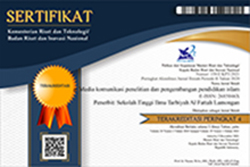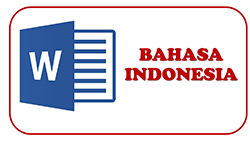Model Pembelajaran Inovatif sebagai Dasar Pelaksanaan Aktivitas Pembelajaran di Sekolah Dasar dan Sekolah Lanjutan
Abstract
Model pembelajaran berfungsi sebagai pedoman bagi guru dalam merencanakan dan melaksanakan aktivitas belajar mengajar. Model pembelajaran yang inovatif akan menjadi daya tarik bagi siswa untuk terlibat secara langsung dalam kegiatan pembelajaran, sehingga akan menarik minat dan motivasi siswa dalam belajar.Setiap macam model pembelajaran memiliki karakteristik yang mendukung kegiatan pembelajaran karena memiliki kelebihan-kelebihan yang mendukung dalam proses kegiatan belajar, seperti model pembelajaran kooperatif, inkuri, konstruktivisme maupun model pembelajaran penyelesaian masalah. Model-model pembelajaran tersebut dapat diaplikasikan baik di sekolah dasar maupun tingkat lanjutan.
Downloads
References
Arends, Richard I. (1997). Classroom Instruction and Management. New York: Mc Graw Hill.
Barthlow, Michelle J. 2011. “The Effectiveness of Process Oriented Guided Inquiry Learning to Reduce Alternate Conceptions in Secondary Chemistry. Dissertation, Liberty University
Borich, Gary D. (1992). Effective Teaching methods. New York: Macmillan Publishing Co.
Carin, A. A. 1993. Teaching Modern Science. New York: Macmillan Publishing Company.
Doolttle, Peter E., & Camp, William G. (1999). Constructivism: The Career and Technical Education Perspective. Journal of Vocational and Technical Education Perspective. Volume 16, Number l 1999.
Eggen, P. dan Don K. 2012. Strategre and Models for Teacher Sixth Edition. Boston: Pearson.
Gage, N.L. dan Berliner, David C. (1984). Educational Psychology. Boston : Houghton Miflin Co.
Gulo. 2008. Strategi Belajar Mengajar. Jakarta: PT. Grasindo
Hanson, David M. 2006. Instructor's Guide to Process-Oriented Guided-Inquiry Learning. Lisle : Pasicif Crest.
Ibrahim, Muslimin. 2005. Pembelajaran Berdasarkan Masalah. Surabaya: Unesa Perss.
Johnson, D. W. & Johnson, F. P. (2000). Joining Together. Group Theory and Group Skills. Boston: Allyn and Bacon.
Johnson, D.W. & Johnson, R.T. (tanpa tahun). An Overview of Cooperative Learning. http://www.clerc.com/pat;es/asses.html, download 14/07/2002.
Kessler, Jamess H. & Galvan, Patricia M. (2007). Inquiry in Action-Investigating Matter Through Inquiry Third Edition. American Chemical Society Education Division
Kuhlthau, Carol C., Maniotes, Leslie dan Capari, ann K. 2007. Guided Inquiry: Learning in The 21st Century. London : Libraries Unlimeted.
Lie, Anita. (2002). Cooperative Learning. Mempraktikkan Cooperative Learning di Ruang-Ruang Kelas. Jakarta : Grasindo.
National Research Council. 2001. Under The Weather: Climate, Ecosystems, And Infectious Disease. Washington, DC : National Academy Press.
Scradamalia, Marlene. 2002. “Collective Cognitive Responsibility for the Advacement of Knowledge, In B smith (Ed)”. Liberal Education. 2002. pp. 67-98
Seifert, Kelvin L. (1991). Educational Psychology. Boston : Houghton Miflin Co.
Suryabrata, Sumadi. (2002). Psikologi Kepribadian. Jakarta: PT. RajaGrafindo Persada.
Trowbridge, Leslie W. & Bybee, Rodger W. 1996. Teaching Secondary School Science-Strategies for Developing Scientific Literacy. New Jersey : Prentice Hall, 1996.
Wenning, Carl J. 2011. Level of Inquiry: Hierarchies of Pedagogical Practices and Inquiry Procesess. s.l. : Illinois State University.





.png)










